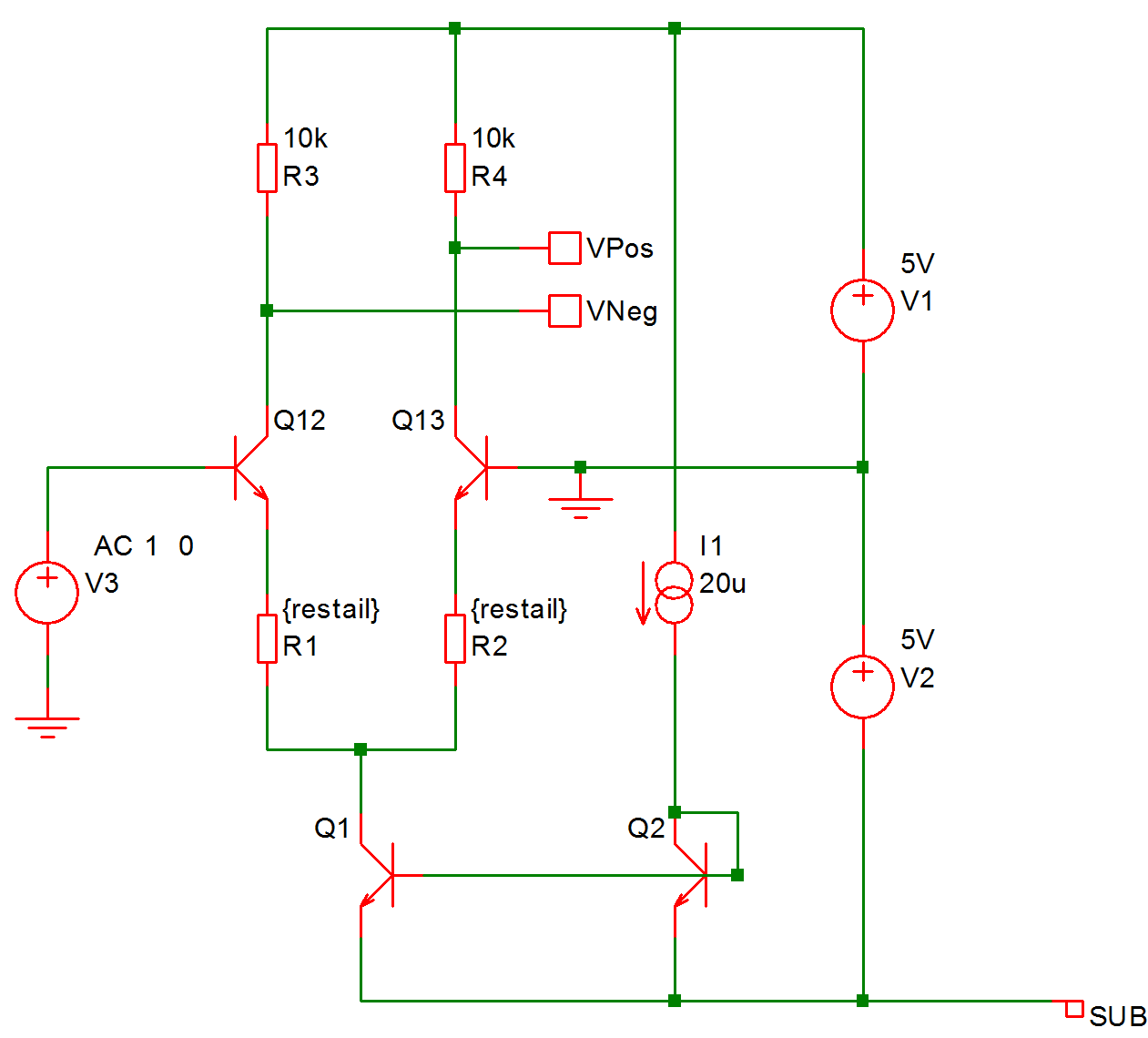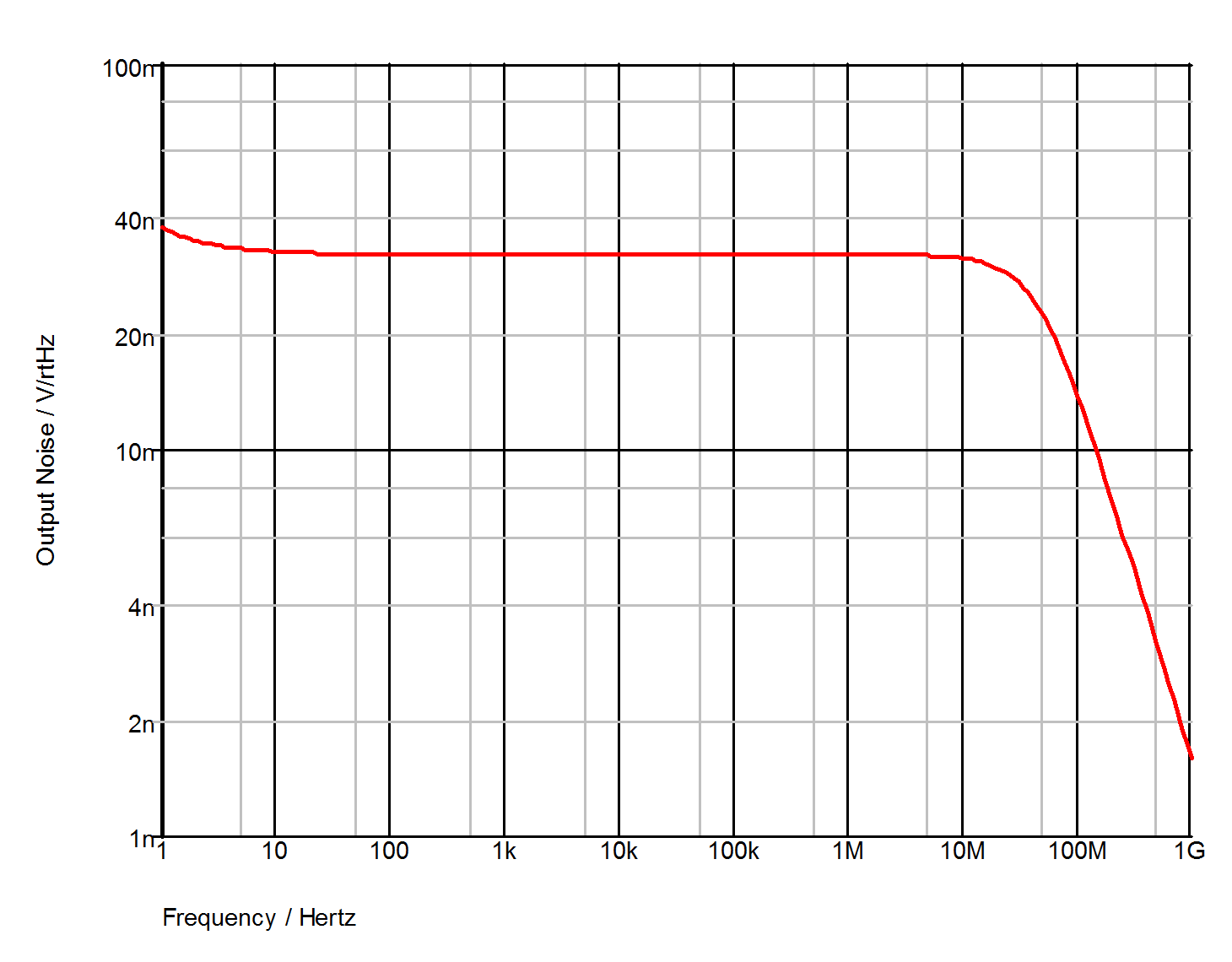

|
In this Topic Hide
Like AC analysis, AC Noise analysis is a small signal mode. The circuit is treated as linear about it's DC operating point and the contribution of all noisy devices to a designated output is computed. The total noise at that output is also calculated and optionally the noise referred back to an input source may also be computed.
Like DC, AC and Transfer Function, it is a swept mode and can be operated in any of the 6 modes described in Sweep Modes. With some of these modes - e.g. sweeping a resistor value - it will be necessary for the DC operating point to be recalculated at each point while with others - such as frequency sweep - it is only necessary to calculate it at the start of the run.
Note that it is not necessary to apply an AC specification to any source - including the optional input referred source - as it is with standard SPICE and many (if not all) of its derivatives.
| Start value, Stop value | Defines sweep range stop and start values |
| Points per decade, Number of points | Defines sweep range. The number of points of the sweep is defined per decade for a decade sweep. For a linear sweep you must enter the total number of points. |
| Define... | Sets up desired sweep mode. See Setting up a Swept Analysis. |
| Output node | This is compulsory. It is the name of the circuit node as it appears in the netlist. Usually the schematic's netlist generator chooses the node names but we recommend that when running a noise analysis that you assign a user defined name to your designated output node. To find out how to do this see Finding and Specifying Net Names. |
| Reference node | Optional. Output noise is referred to this node. This is assumed to be ground if it is omitted. |
| Source name | Optional. Voltage or current source to which input source is referred. Enter the part reference of either a voltage or current source. |
See Multi-step Analyses.
Simulator Reference Manual/Command Reference/.NOISE.
Refer to Plotting Noise Analysis Results.


In the following circuit we wish to find the optimum value of tail current for a source impedance of 1KΩ. To do this we sweep the parameter taili which is used to set the current as well as the values for R1, R2, R3 and R4. As can be seen from the graph about 300μA would seem to be best. The noise analysis was setup with the following parameters:

The result:

|